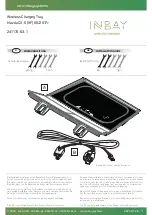
Allow these components to cool down before
changing a bulb.
Do not use a bulb that has been dropped or if
its glass tube has been scratched.
The bulb may explode if:
R
you touch it
R
it is hot
R
you drop it
R
you scratch it
Only operate bulbs in enclosed lamps
designed for that purpose. Only install spare
bulbs of the same type and the specified volt-
age.
Marks on the glass tube reduce the service
life of the bulbs. Do not touch the glass tube
with your bare hands. If necessary, clean the
glass tube when cold with alcohol or spirit and
rub it off with a lint-free cloth.
Protect bulbs from moisture during opera-
tion. Do not allow bulbs to come into contact
with liquids.
There are bulbs other than the Xenon bulbs
that you cannot replace. Replace only the
bulbs listed (
Y
page 103). Have the bulbs that
you cannot replace yourself changed at a
qualified specialist workshop.
If you require assistance changing bulbs, con-
sult a qualified specialist workshop.
If the new bulb still does not light up, consult
a qualified specialist workshop.
Bulbs and lamps are an important aspect of
vehicle safety. You must therefore make sure
that these function correctly at all times.
Have the headlamp setting checked regularly.
Overview: changing bulbs/bulb types
You can replace the following bulbs. The bulb
type can be found in the legend.
Vehicles with halogen headlamps
:
Turn signal lamp: 3457
;
High-beam headlamp: H7 55 W
=
Parking lamp/standing lamp: W 5 W LL
?
Low-beam headlamp: H7 55 W
Vehicles with Bi-Xenon headlamps
:
Cornering lamp: H7 55 W
Tail lamps (vehicles with halogen headlamps)
:
Tail lamp/turn signal lamp/brake lamp:
P 21 W
;
Inoperative
=
Side marker lamp: P 21 W
Replacing bulbs
103
Li
ghts
and
wind
sh
ield
wip
er
s
Z
Summary of Contents for B-Class Electric Drive W245
Page 4: ......
Page 30: ...28 ...
Page 40: ...38 ...
Page 72: ...70 ...
Page 98: ...96 ...
Page 114: ...112 ...
Page 126: ...124 ...
Page 172: ...170 ...
Page 308: ...306 ...
















































